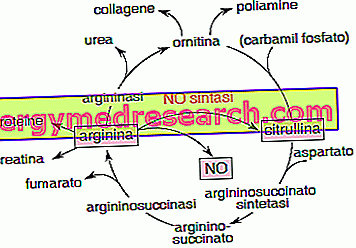By Dr. Laura Asinari
The Pilates method is a gymnastics that teaches to assume a correct posture and to give greater harmony and fluidity in the movements. The goal of its creator was precisely to make people aware of themselves, their bodies and their minds to unite them in a single, dynamic and functional entity. In a sense he tried to merge the best aspects of Western physical disciplines with those of Eastern techniques.

Later he became a passionate sportsman: diver, boxer, gymnast, skier and even circus acrobat.
He left Germany to travel to England in 1912. At the outbreak of World War I he was interned and began training the other prisoners with his sequence of free-body exercises on the mat that today is called Matwork, while Joseph baptized him "Muscle contrology" . He also performed his work as a nurse, experimenting with the use of springs attached to hospital beds, designed to allow patients to exercise and tone their muscles before they even get back on their feet and walk.
The springs, used as resistance to movements, became the basic tool of his method. In today's studies we find the "Universal Reformer" and "Cadillac", the two machines that take advantage of the resistance of the springs.
After the war, Pilates returned to Germany for a short time, but then moved to New York, where his method was immediately successful with dancers such as George Balanchine and Martha Graham.
Until not long ago it remained a limited secret to the environment of classical dancers, until it was discovered by athletes, actors and ordinary people. In recent years the success of the method has only increased.
Unlike many types of gymnastics, the Pilates method strictly follows principles based on a precise philosophical and theoretical basis. It is therefore not a simple set of exercises, but a real method that has developed and perfected in more than sixty years of practice and observation. The versatility of the technique has allowed its use in the rehabilitation field.
In the method the position and movement of every part of the body are extremely important and the body moves like an integrated system. The more correctly the body is used during the exercises, the more correctly it will be used in any other circumstance: the posture improves and the stiffness and tensions disappear, as well as the back problems deriving from an incorrect posture.
The objective of the Pilates method consists in bringing the individual to move in economy, grace and balance by respecting the basic principles that constitute the technique:
- Concentration: attention required as each exercise involves the whole body, not individual muscle areas. The awareness of posture becomes essential during the execution of the exercise. Furthermore, focusing on movements, the mind detaches itself from worries and anxieties until it reaches a deep relaxation
- Control: through concentration one must come to have total control of each gesture, thus activating an adequate awareness that avoids injuries
- Fluidity of movement: no movement is performed rigidly or contracted, neither too fast or slow. In every movement there must be harmony, grace and fluidity, combined with body control. According to Pilates the fluidity of movements is also linked to the strength of the center of gravity.
- Accuracy: the lack of control of every single gesture inevitably leads to an incorrect interpretation and execution of the exercise. From the precision of the movements the balance of the tone of the various muscle regions originates, which translates, in everyday life, into grace and economy of action.
- Breathing: fluid and complete inhalation and exhalation are an integral part of all exercises. The breath must be coordinated with the movements; for this reason every exercise of the Pilates method is accompanied by precise indications for correct breathing, which must be re-educated to release the diaphragm as much as possible.



